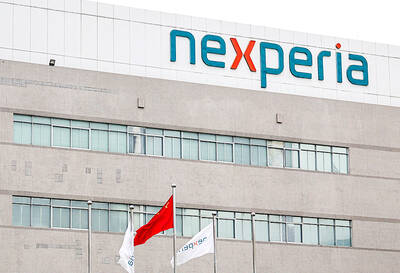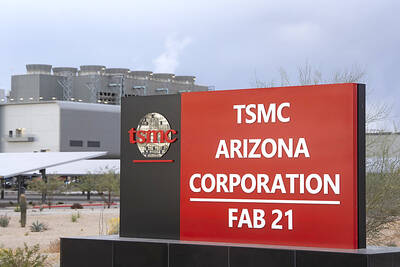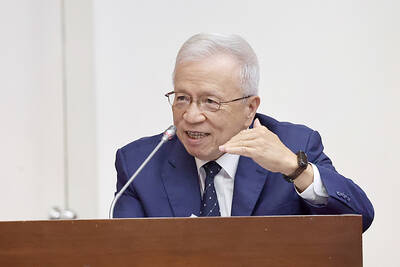Taiwan Power Co (Taipower, 台電) yesterday said that the nation would still have an electricity reserve margin of 12.5 percent to maintain a stable power supply once Unit 1 at the Linkou coal-fired power plant in New Taipei City begins commercial operations this summer as expected.
Taipower was responding to media reports that Taiwan might face a risk of power outages this summer due to the delay of two power plant projects.
Annual power reserve capacity margin refers to a utility’s capacity to generate more electricity than the total power the system normally requires.
According to media reports, Taipower had originally planned to complete renewal projects at Unit 2 of the Talin power plant in Kaohsiung and Unit 2 of the Linkou power plant with a total capacity of 1,600MW this summer.
However, due to a delay in the projects and the postponed replacement of old power generation units at the Talin plant, the reserve margin could go from positive to negative, raising the risk of power outages in the nation this summer, the reports said.
Taipower said that Unit 1 at the Linkou power plant, which was scheduled to start operation in November last year, was suspended due to a ruptured pipe during testing. It is to resume testing tomorrow.
The unit is set to go into operation this summer and run at full capacity next summer, the company said.
To ensure a stable supply of electricity this summer, in addition to improving power plant operations and maintenance, Taipower is to continue to promote electricity conservation measures and the reduction of power consumption during peak hours and explore new methods for power generation, the company said.

JITTERS: Nexperia has a 20 percent market share for chips powering simpler features such as window controls, and changing supply chains could take years European carmakers are looking into ways to scratch components made with parts from China, spooked by deepening geopolitical spats playing out through chipmaker Nexperia BV and Beijing’s export controls on rare earths. To protect operations from trade ructions, several automakers are pushing major suppliers to find permanent alternatives to Chinese semiconductors, people familiar with the matter said. The industry is considering broader changes to its supply chain to adapt to shifting geopolitics, Europe’s main suppliers lobby CLEPA head Matthias Zink said. “We had some indications already — questions like: ‘How can you supply me without this dependency on China?’” Zink, who also

At least US$50 million for the freedom of an Emirati sheikh: That is the king’s ransom paid two weeks ago to militants linked to al-Qaeda who are pushing to topple the Malian government and impose Islamic law. Alongside a crippling fuel blockade, the Group for the Support of Islam and Muslims (JNIM) has made kidnapping wealthy foreigners for a ransom a pillar of its strategy of “economic jihad.” Its goal: Oust the junta, which has struggled to contain Mali’s decade-long insurgency since taking power following back-to-back coups in 2020 and 2021, by scaring away investors and paralyzing the west African country’s economy.

Taiwan Semiconductor Manufacturing Co (TSMC, 台積電) received about NT$147 billion (US$4.71 billion) in subsidies from the US, Japanese, German and Chinese governments over the past two years for its global expansion. Financial data compiled by the world’s largest contract chipmaker showed the company secured NT$4.77 billion in subsidies from the governments in the third quarter, bringing the total for the first three quarters of the year to about NT$71.9 billion. Along with the NT$75.16 billion in financial aid TSMC received last year, the chipmaker obtained NT$147 billion in subsidies in almost two years, the data showed. The subsidies received by its subsidiaries —

BUST FEARS: While a KMT legislator asked if an AI bubble could affect Taiwan, the DGBAS minister said the sector appears on track to continue growing The local property market has cooled down moderately following a series of credit control measures designed to contain speculation, the central bank said yesterday, while remaining tight-lipped about potential rule relaxations. Lawmakers in a meeting of the legislature’s Finance Committee voiced concerns to central bank officials that the credit control measures have adversely affected the government’s tax income and small and medium-sized property developers, with limited positive effects. Housing prices have been climbing since 2016, even when the central bank imposed its first set of control measures in 2020, Chinese Nationalist Party (KMT) Legislator Lo Ting-wei (羅廷瑋) said. “Since the second half of